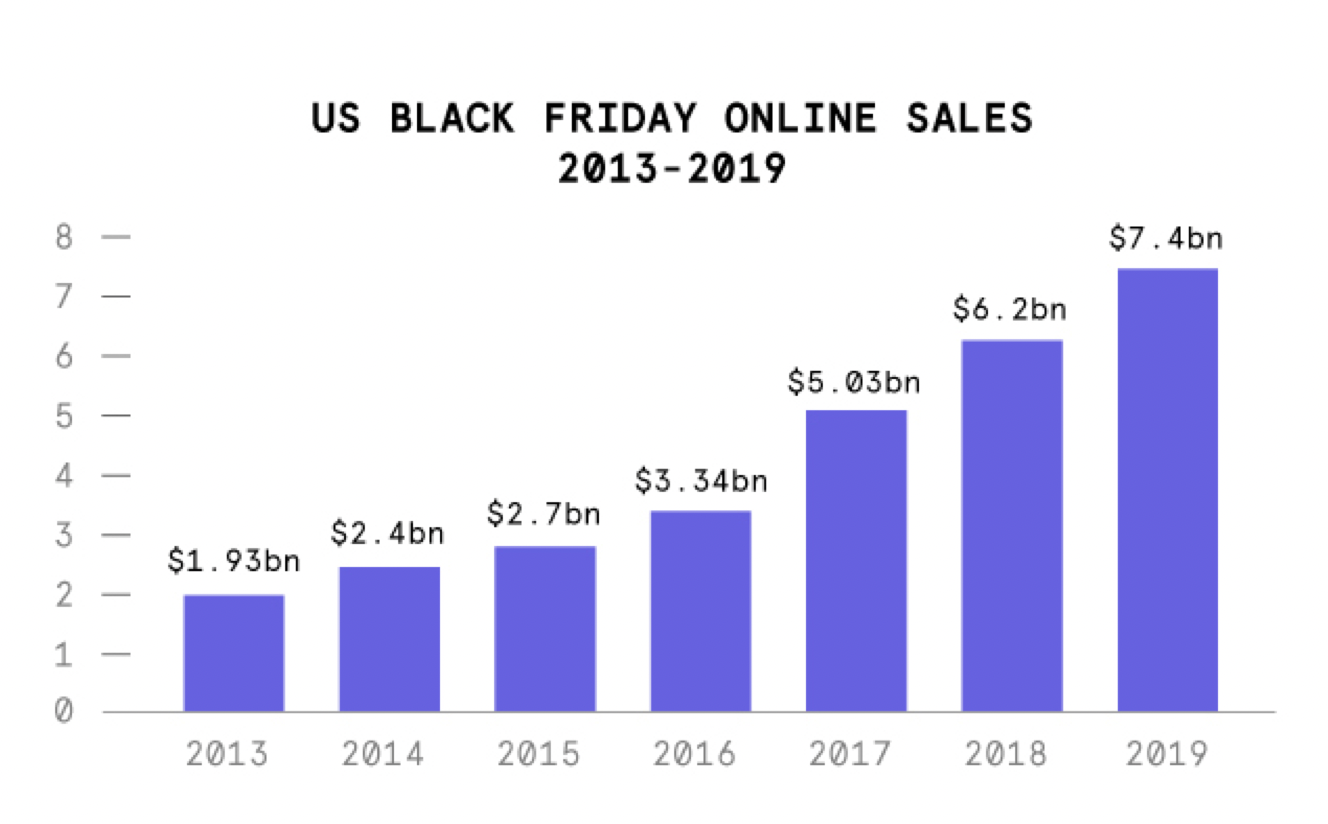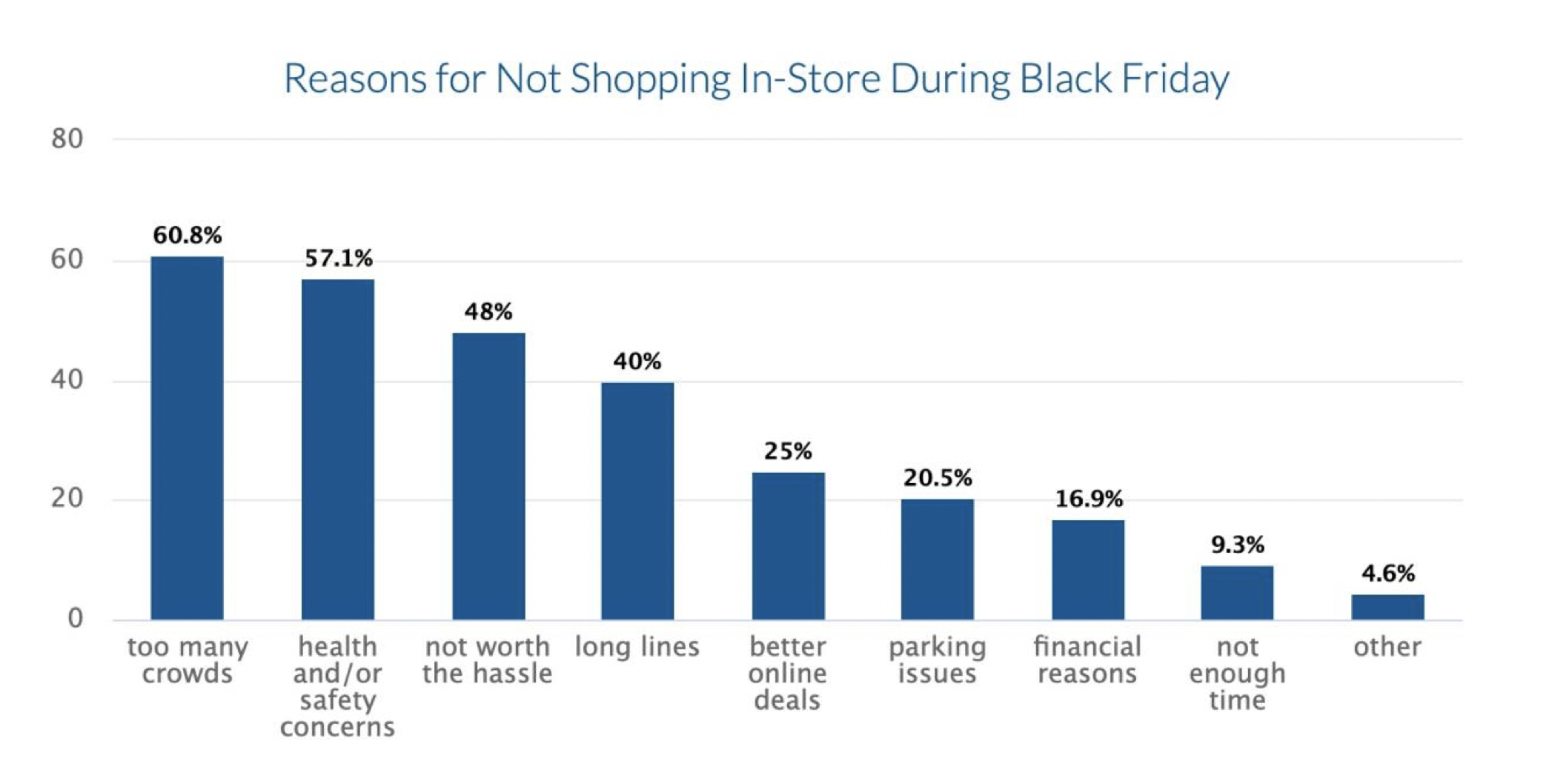Every year around this time, excitement starts building for the annual Black Friday sales. But find out why this year no one can predict what will happen.
Black Friday is the day after Thanksgiving in the US. And while Black Friday sales have been running since the 1950s, they only started gaining international popularity from around 2010.
Black Friday is usually the start of the busiest shopping period of the year, with 30% of all annual retail sales occurring between Black Friday and Christmas. For retailers, this means that Black Friday is one of their most important annual events – one they spend months planning for.
Part of that planning involves media buying to ensure their ads reach the right people at the right time – and secure a healthy share of money being spent. And that media buying is frequently decided by data from previous years, which helps marketers plan the best times, channels and messages for their campaigns.
Two reasons why Black Friday will be different this year
However, 2021 is far from a ‘normal’ year. Which means it’s very difficult to predict how consumers may act. There are two key reasons why this year is so different.
1) The pandemic has given e-commerce a boost
The first reason is not surprising: the pandemic. Over the past 18 months, the lives of almost everyone in the world have been turned upside down. Today many of us don’t work or conduct our lives in the same way we did before COVID-19. And we certainly aren’t shopping in the same way.
Ecommerce was already growing fast before the pandemic, especially, as you can see, on Black Friday. But lockdowns accelerated this trend significantly, with people either unable to physically get to a bricks and mortar store, or preferring the convenience and safety of shopping online:
As a result, in 2020 online retail sales increased 32.4% year-on-year. And in the first quarter of 2021 they rose by 39%. All of which bodes well for brands looking to reach online shoppers this Black Friday.
But as the pandemic gives, so it takes away.
2) The pandemic has led to global supply chain issues
Which leads us to the second reason why this year’s Black Friday is so unpredictable: supply issues.
Globally, many brands are struggling to acquire key manufacturing components and even stock to sell thanks to huge breaks in the supply chain in the container market, shipping routes, ports, air cargo, trucking lines, railways and warehouses. This has led to order backlogs, delivery delays and an increase in transportation costs and consumer prices.
In the UK this is complicated further by staffing problems and transportation issues.
These problems are tricky at any time of the year, but have the potential to be catastrophic in the busiest shopping season.
People are changing their Christmas shopping habits this year
There are knock-on effects we need to take into account as a result of these supply chain issues. Around the world, shoppers are being told to start buying their Christmas presents early to avoid either paying inflated prices, or worse – not getting them at all. And some supermarkets have even taken to releasing their Christmas stock months ahead of schedule to beat any supply chain issues.
In the US, parents have been warned of a major toy shortage this holiday season, due to backups in the global supply chain, with the warning to start their shopping ASAP to get those must-have gifts, and avoid hefty shipping costs and delays.
With this as a backdrop, who knows how shoppers will behave on Black Friday this year. Will they pounce on the bargains as a chance to get some Christmas gifts in early (30% of consumers usually see Black Friday as their main opportunity for buying Christmas gifts)? Or will they have already secured their gifts well in advance? (Thanks to the warnings, a quarter of the UK started their festive shopping as early as August this year, and 48% said they were planning to start by October.)
Will brands even have the stock or the margins to be able to run their usual discounts? Bernie Brookes, the former CEO of Myer said: “Australia has a very big Black Friday, it’s the biggest retail event of the year. But if retailers haven’t got plenty of stock available they won’t be able to run 30, 40, 50% off deals … because that takes a lot of stock out of the system.”
And companies such as shoemaker Steve Madden (SHOO) have said that they are already missing out on sales because they don’t have enough goods – and we’re not even into the peak shopping season yet.
The good new though is that, according to Future PLC there should be plenty of cash up for the taking this year if companies DO have stock. UK consumers apparently have almost £200bn of savings ready to spend between Black Friday and Christmas. 70% are planning to spend the same or more this Black Friday than they did in 2020, and 78% intend to maintain or increase their Christmas budget for 2021.
So what does this mean for brands looking to maximise their Black Friday sales?
We won’t know exactly what will happen in Black Friday 2021 until after the event. But there are some learnings from previous years we can use to predict ways that people may behave during Black Friday.
Here’s what we learned from consumers’ behaviour in Black Friday 2019:
- Most customers (69%) visited websites using a mobile device.
- 7pm-9pm was the most popular time of day to shop online.
- Black Friday, the Sunday after Black Friday and Cyber Monday had the highest traffic.
- Out of the entire two-week period, 41% of all purchases were made on Black Friday weekend.
- Mobile accounted for 65% of purchases.
- The early hours of the morning saw the lowest number of purchases.
- Desktops had the highest average order value at 17.6% higher than mobile and tablet.
(You can read more Black Friday data here.)
Why this unpredictability means DCO campaigns are more important than ever right now
The unpredictability around Black Friday this year can make planning campaigns very difficult. If consumer behaviour defies your predictions, or your stock availability changes suddenly, how can you ensure your ads reflect this in real time?
This is where dynamic creative optimisation (DCO) comes into its own. With tens of thousands of potential ad variants you can build and serve tailored ads with the right messaging, at the right time, in split seconds.
So if your stock changes? No problem – you simply choose an alternative product to show in your ads. People react in an unexpected way? That’s fine – you can edit your messaging.
Black Friday or not, DCO offers a level of personalisation that other ads just can’t match, and delivers the superior results you’d expect from that.
And when you connect your DCO ads to your actual, real time stock levels and prices (as the technology we have developed can) you can serve ads that show people the products they have viewed, the current price and stock levels, and amount of time until offers expire.
How we can help you reach more buyers through your lifecycle all year round
Black Friday may be one of the biggest shopping events for many retailers, but it’s just one challenge (and opportunity) in your marketing calendar. And one we’d love to help you with.
If you’d like to find out more about how we can help you reach buyers throughout your marketing lifecycle, just get in touch.

